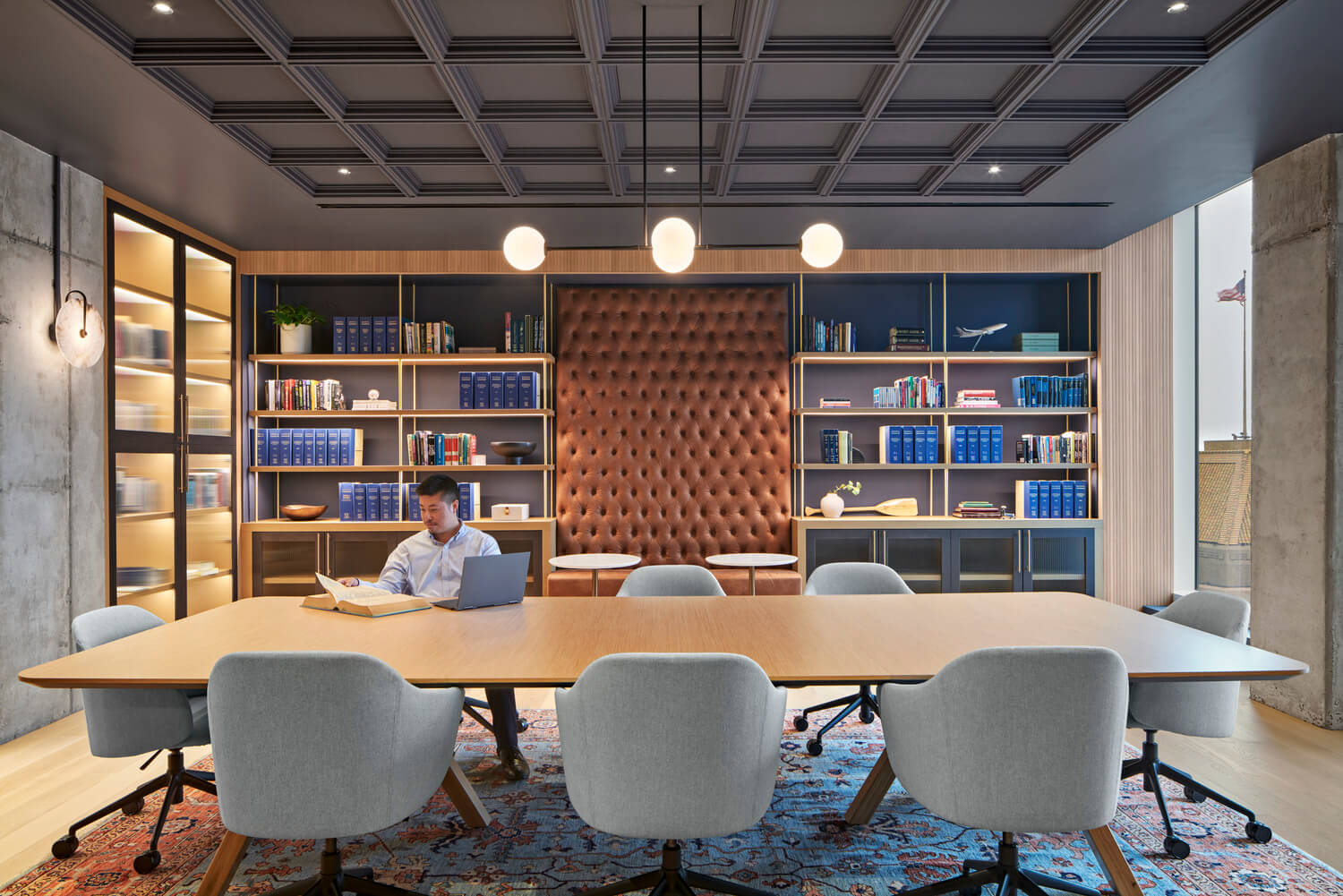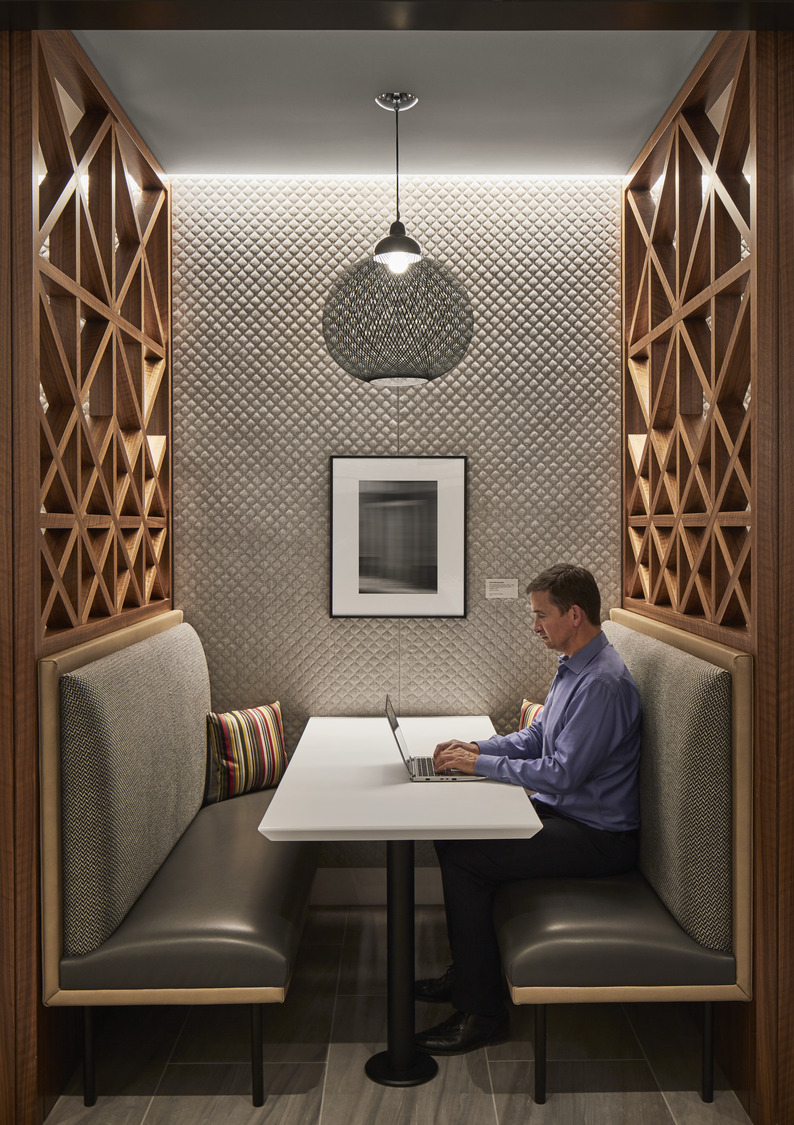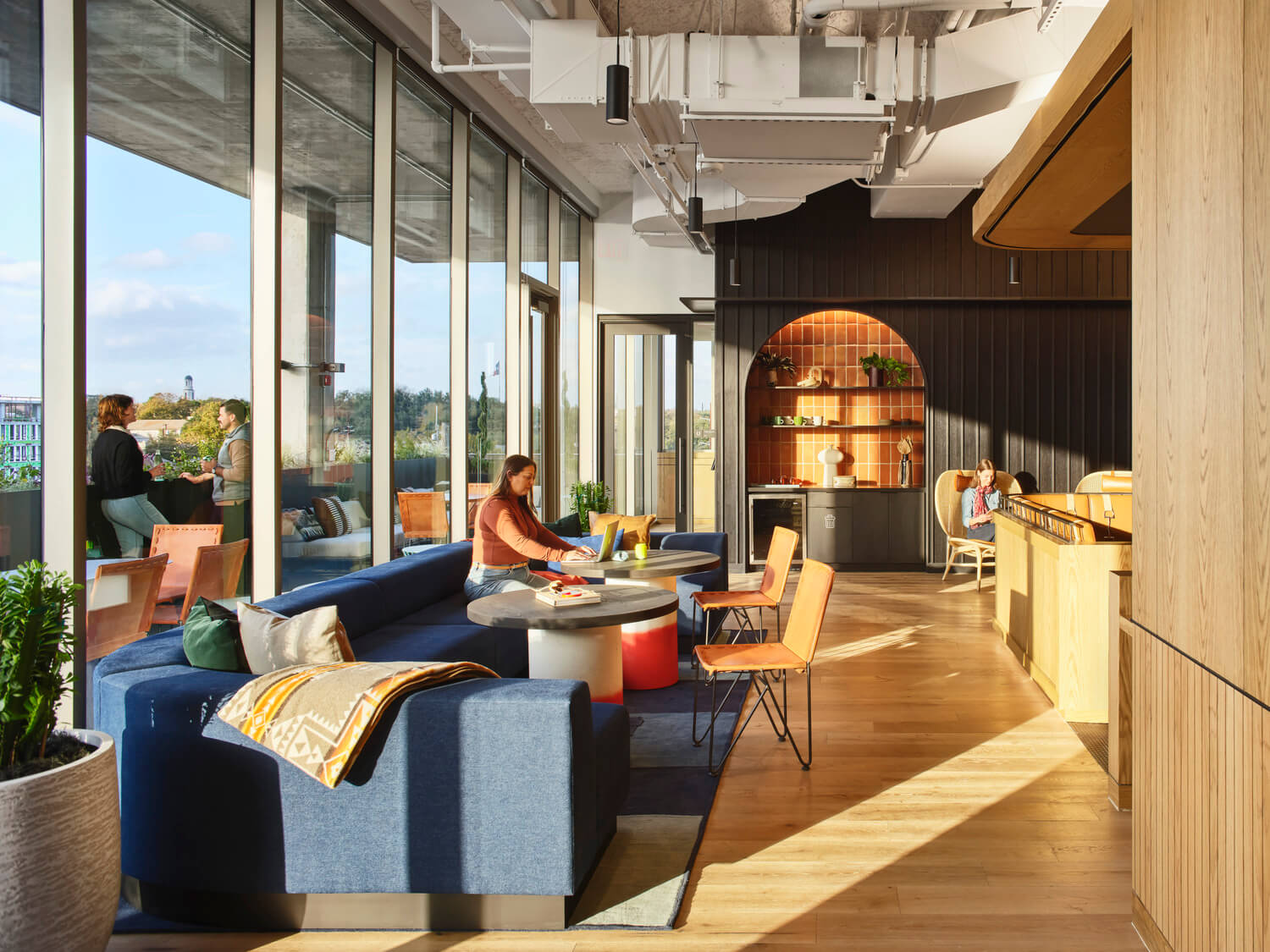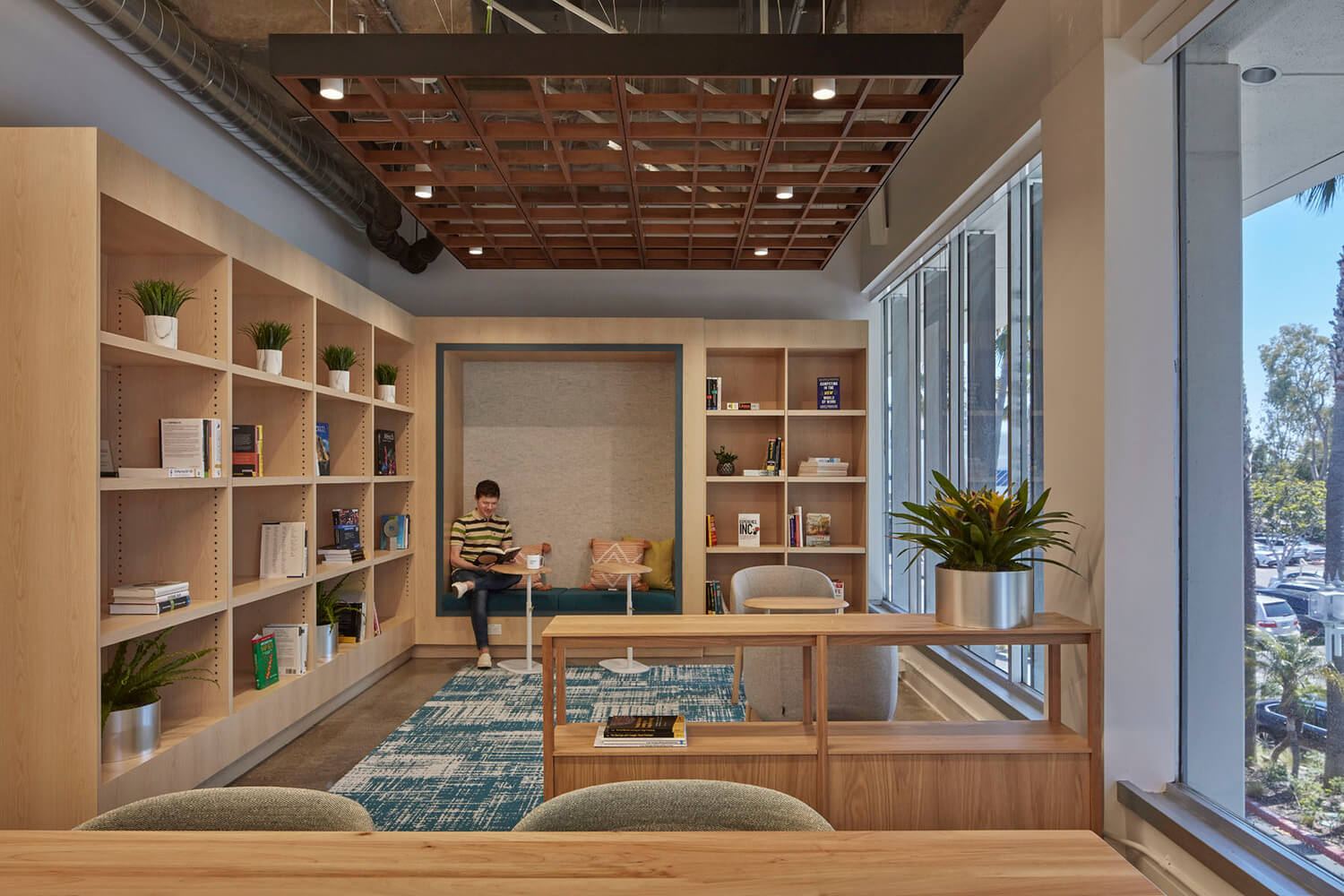The Profitable Property:
Merging Work & Living
at Multi-Family Properties
By Philip Metzger | Senior Designer
In the constantly shifting terrain of design and architecture, the boundaries between residential and commercial domains are increasingly fading. What were once clearly delineated spheres are now converging, as features traditionally associated with workplaces find their place within our homes and vice versa.
The transformation isn't limited to how we work; it extends to where we work and, more importantly, how our surroundings facilitate our work. Today, our spaces are expected to seamlessly adapt to our schedules and preferences. While productivity has long been the focus of office environments, modern workplaces now prioritize efficiency, technology integration, safety, well-being, and inclusivity, as well as foster a sense of belonging for all users. Consequently, our homes are tasked with parallel objectives as we integrate work into our private lives.

Cambridge Associates | Photography by Robert Benson
As offices evolve into more accommodating, flexible, and hospitality-oriented environments, our homes must also adapt to include our professional lives. This is a significant challenge, particularly for multi-family buildings, which must cater to a diverse range of tenants including full-time remote workers, traditional office-goers, those who work nightshifts, and everyone in between.
Imagine seamlessly integrating all the functions of an office into the very fabric of home, without intruding on private life. While this concept is beginning to take form, a day in such a world would be markedly different from what we currently know. Many contemporary luxury apartments boast of amenities, yet these often extend no further than entertainment spaces and shoebox-sized fitness facilities, albeit some may offer private conference rooms for reservation. However, significant elements are often overlooked, leaving these spaces feeling work-capable but lacking the experiential depth found in modern offices. For a multi-family building to truly optimize the intersection of work and life, it must embody the agile work environment characteristic of today's professional landscape.
By integrating workplace design principles into multi-family projects, we are able to create work-centric spaces with exceptional acoustics, adaptable privacy features, advanced reservation technology, and more. This new era of design meticulously considers every aspect of construction and incorporates scientific insights to support it. From selecting inclusive backdrops for conferencing cameras to optimizing lighting for enhanced focus and ensuring privacy protocols to safeguard sensitive work materials, these technologies, though not novel, are now finding innovative applications in our homes. For those of us passionate about designing highly productive environments this presents an exciting opportunity. Having a dedicated conference space within your building can serve myriad purposes beyond work—a venue for focused proprietary discussions with third parties, collaborative vacation planning sessions projected onto a big screen, or even a huddle room for poignant video calls with deployed loved ones.
This evolution signifies more than just a convergence of disciplines; it embodies a fundamental reimagination of how we inhabit and interact with our environments. IA is committed to leveraging our significant subject matter expertise and depth of experience as an influence in this paradigm shift, ushering in a new era of design for multi-family complexes that amalgamates data-driven strategy, technological integration, human needs, and the artistry of adaptable live/work spaces.
Approaching multi-family projects with a strategic mindset honed over decades of commercial design experience, we can draw on robust data analysis and comprehensive research methodologies to identify underutilized spaces within residential complexes to envision their potential for revitalization. Strategic repositioning efforts maximize amenity square footage and effectively engage users, ensuring every design element serves to enhance the resident experience. We craft highly curated spaces that seamlessly integrate the diverse aspects of life—work, leisure, entertainment, community, and connection.

Confidential Client | Photography by Tom Harris

Sterling Bay | Photography by Tom Harris
In today’s interconnected world, the once-clear boundaries between work and home have dissolved beyond recognition. Acknowledging this shift, we are pursuing the principles of design that seamlessly blend residential comfort with commercial functionality in multi-family projects. Our innovative approach identifies communal areas that effortlessly transition from productive workspaces to inviting retreats for entertainment and relaxation without sacrificing privacy or community.
Technology can be harnessed to enrich the multi-family experience, incorporating hospitality-inspired commercial amenities and innovative smart systems. This will elevate convenience, efficiency, community, and overall resident and owner satisfaction, setting new standards for modern living. Design can anticipate residents' needs, serve as an attractive recruiting tool, and enhance tenant retention rates. Home can be augmented through the synergy of a multi-family environment, surpassing the offerings of most single-family residences.
The integration of biophilic elements that promote well-being and foster a connection with nature is central to our design philosophy. Drawing inspiration from our workplace experience, multi-family residences can be infused with the restorative power of the outdoors, striking a harmonious balance between urban living and natural tranquility to support residents' physical and mental well-being.

Unity Technologies | Photography by Andrea Calo
We understand the importance of community in cultivating a sense of belonging and collaboration. By drawing on workplace dynamics to enhance the multi-family complex, we can create spaces where residents feel connected and engaged. Our repositioning efforts prioritize community-centric amenities and flexible spaces that can be customized for individual resident use and preferences. The overall effect will contribute to cohesion and inspire meaningful interactions among neighbors—the balance between work and life emphasized through spaces that facilitate productivity or relaxation.
Through adaptable spaces with flexible layouts that accommodate diverse needs, the concept of home is redefined. From work areas for collaboration to intimate gathering spots, design will empower residents to curate their living-space experiences according to their evolving lifestyles. An emphasis on future-proofing multi-family complexes ensures they remain relevant and responsive to residents' needs over time, providing landlords with opportunities for forward-looking improvements based on market trends and technological advancements.
As the boundaries between residential and workplace design continue to blur, our understanding of how we inhabit and interact with these spaces evolves. By incorporating elements of workplace environments into residential living, we create spaces that are welcoming, adaptable, highly functional, and human-centric. Whether working, shopping, or socializing, expect to encounter the comforts of home and the workplace in unexpected places as the expertise of residential and commercial design converge in exciting new ways.

Confidential Client | Photography by Benny Chan/Fotoworks

